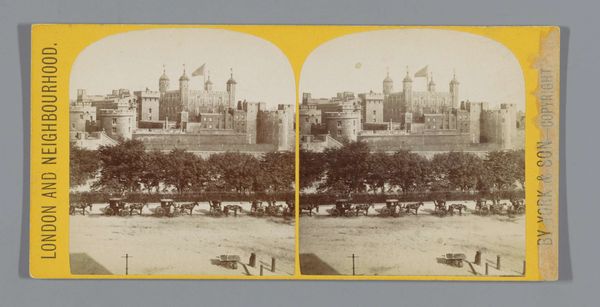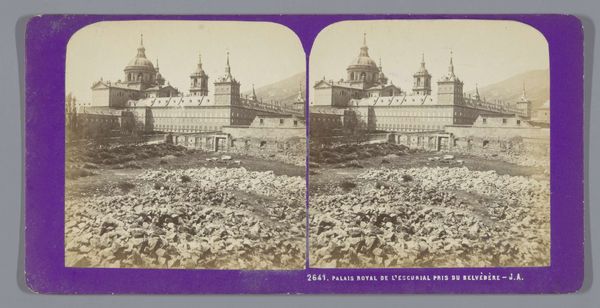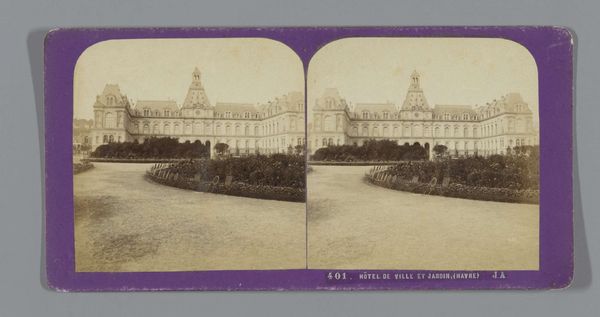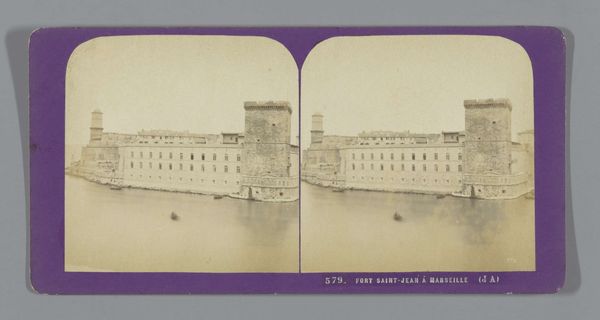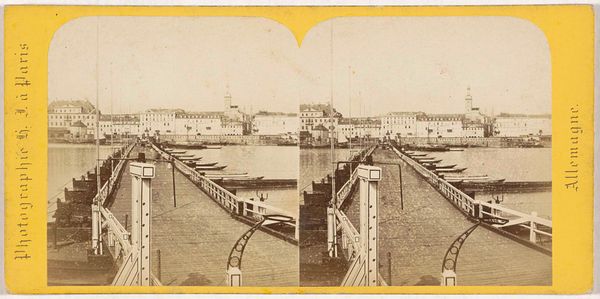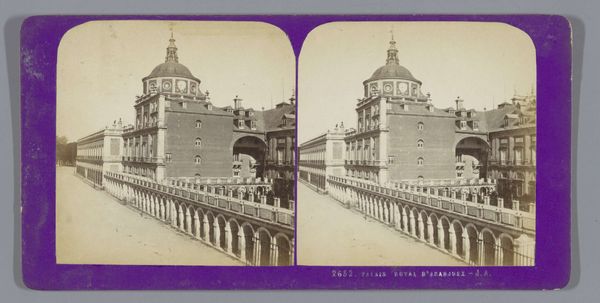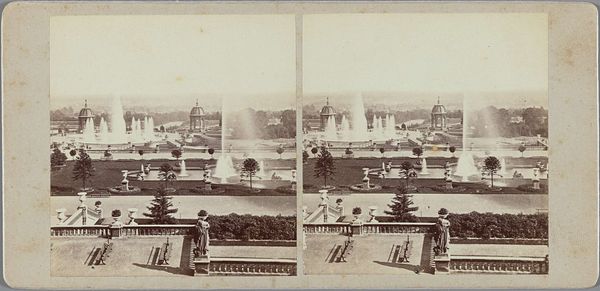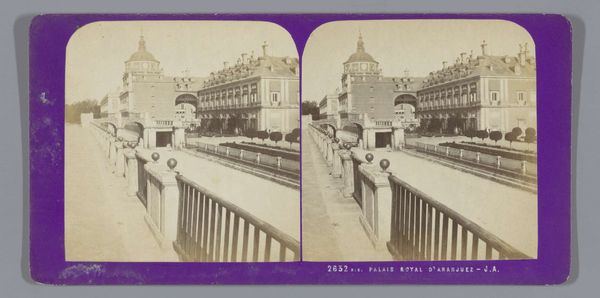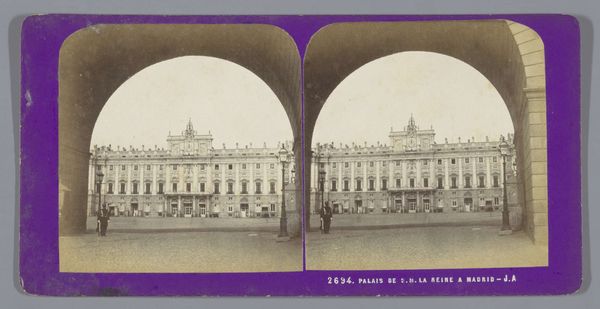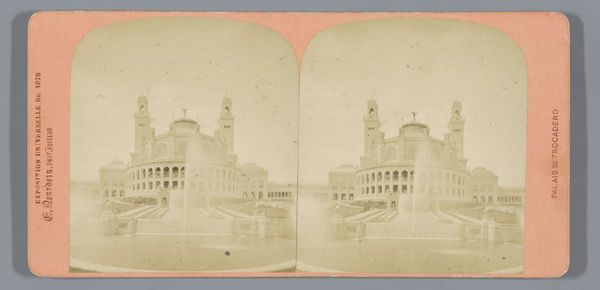
print, photography, albumen-print
# print
#
landscape
#
photography
#
coloured pencil
#
ancient-mediterranean
#
watercolour illustration
#
albumen-print
#
building
Dimensions: height 85 mm, width 170 mm
Copyright: Rijks Museum: Open Domain
This stereoscopic photograph captures the imposing exterior of the Escorial, created by Jean Andrieu. Its architectural forms—the rhythmic repetition of windows, the imposing domes, and the overall impression of geometric rigor—speak volumes. The Escorial, conceived as a monastery, palace, and mausoleum, embodies the aspirations of Philip II of Spain. We see echoes here of the ancient Roman grid, a pattern of order imposed upon the world. Consider the symbolism: the grid as a sign of control, an attempt to tame the chaos of existence. This motif is not unique; it appears across time, from city planning in antiquity to the structured compositions of Renaissance paintings. The Escorial’s architecture elicits emotions of awe and perhaps, a sense of being dwarfed by the scale of power and order, tapping into our collective memory of grand, imposing structures. The rigid symmetry conveys a sense of stability and permanence, an attempt to transcend the chaos of history. This desire for permanence, for a structure that defies the ravages of time, resonates across cultures and epochs, revealing humanity’s deep-seated anxieties about mortality.
Comments
No comments
Be the first to comment and join the conversation on the ultimate creative platform.

